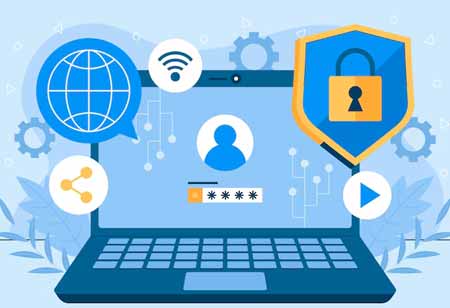THANK YOU FOR SUBSCRIBING
Be first to read the latest tech news, Industry Leader's Insights, and CIO interviews of medium and large enterprises exclusively from Education Technology Insights
Safeguarding Privacy in Modern Learning Environments
As technology advances, educational institutions must remain vigilant, adaptable, and committed to addressing emerging challenges. These entities can guarantee that the digital education revolution continues to be a force for good, opening new possibilities.

By
Education Technology Insights | Friday, November 14, 2025
Stay ahead of the industry with exclusive feature stories on the top companies, expert insights and the latest news delivered straight to your inbox. Subscribe today.
Fremont, CA: Digitization has made learning more accessible and convenient by removing geographical limitations and offering a vast range of resources at learners’ fingertips. Yet, this shift also brings a significant challenge: safeguarding the privacy and security of student data. As educational institutions increasingly adopt digital platforms and online learning models, they must navigate the complex landscape of data protection, ensuring regulatory compliance while safeguarding sensitive student information.
Educational institutions must take a proactive and comprehensive strategy to maintain data privacy and security. So, here are the primary top pricing compiled from above:
Robust Data Privacy Policy
Create a clear and thorough data privacy policy that specifies how student information will be gathered, utilized, kept, and safeguarded. Ensure this policy is readily available to all stakeholders and conforms to applicable legislation.
Strong Encryption Measures
Encrypt data both at rest and in transit to safeguard against unwanted access. Use encryption mechanisms and technologies that adhere to industry standards and best practices.
Third-Party Partnerships
Before using third-party programs or services, carefully review their data privacy and security policies. Create data protection agreements with these partners to guarantee.
Regular Data Audits and Assessments
Conduct frequent audits and inspections of your data privacy and security policies. This involves checking data access rights, tracking data consumption, and finding vulnerabilities. Continuous evaluation allows for the proactive identification and mitigation of hazards.
Education and Training
Invest in education and training initiatives for students, instructors, and employees. Promote digital literacy and cybersecurity knowledge to ensure that people understand the significance of protecting student data and can spot and respond to possible attacks.
Incident Response Plan
Create a comprehensive incident response strategy, including methods for dealing with data breaches or security events. This strategy should outline containment, investigation, notification, and recovery procedures.
The advantages of digital education can only be fully exploited if students' sensitive information is secured. By implementing best practices in data privacy and security, educational institutions may establish an appropriate educational setting that not only complies with legislation but also inspires faith and confidence in students, teachers, and parents.







